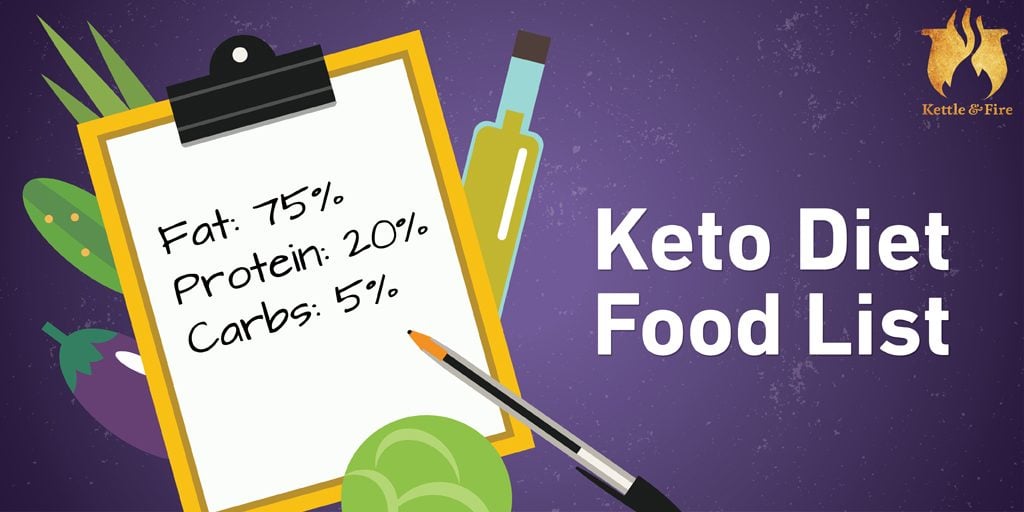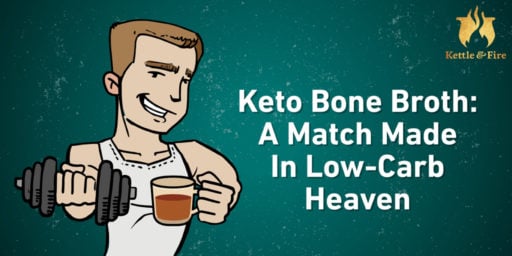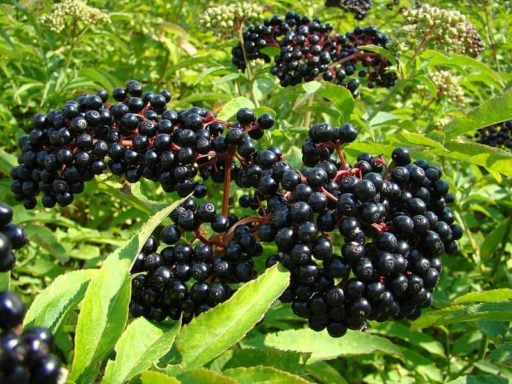81 Keto Food List for Ultimate Fat Burning (Printable Cheat Sheet)

Following the keto diet promotes fat-burning.
Weight loss.
And boosted energy levels.
All without restricting calories or eating bland, boring meals.
But to fully reap the benefits of a ketogenic diet, you must know which foods are encouraged on the keto diet food list and which foods to avoid.
Why Follow a Keto Diet?
The ketogenic diet is a high fat.
Low carb diet that’s become increasingly popular for weight and fat loss.
As we explain extensively in our keto diet mastery, the principle
of the keto diet is to:
“Eat fat to burn fat.”
By heavily restricting carbs — your body’s primary fuel source — your body begins to burn your fat stores for fuel instead, which produces ketones.
This state of elevated ketones in the bloodstream is called ketosis, hence ketogenic diet (1).
In addition to weight loss and energy, the keto diet has been shown to support skin health, cognitive function, memory, and hormonal balance (2).
Now, let’s dive into the keto diet nutrient ratios and the keto food list.
How Much Fat Do You Need on the Keto Diet?
On the keto diet, you’ll be eating a small amount of protein and very few carbs.
That leaves the rest of your micronutrient consumption to fats — anywhere between 60-75%.
There are four different types of keto diets you can follow. Each version is high fat and low carb but with different macronutrient ratios.
For example, the Standard Ketogenic Diet (SKD) is the most popular version of the keto diet and the one we’re referring to throughout this article.
The SKD recommends:
- 75% fat
- 20% protein
- and 5% carbs
The second type is the High Protein Keto Diet, which is geared mostly towards extremely active people or athletes.
This version of the keto diet recommends:
- 60% fat
- 35% protein
- and 5% carbs
If your reason for following the keto diet is to lose weight, you typically won’t eat more than 20-25 grams of carbs per day.
To put that into perspective, a medium-sized banana is around 23 grams of net carbs — so even eating bananas in moderation would almost be enough to prevent the average person from entering ketosis.
People who are extremely active are the exception, as they require more fuel(3).
As you can see, the macronutrient ratios of your keto meals can vary depending on your personal needs.
However, your fat ratio must always be significantly higher than carbs and proteins.
The keto calculator can give you a general sense of how much fat you should be eating, although your individual nutrient requirements may vary.
It’s a good idea to consult with a qualified healthcare practitioner to determine your unique nutrient needs so you can achieve the results you’re looking for.
What Kind of Fats Are OK?
Since fats make up 75% of dietary macros, they’re obviously a vital aspect of the ketogenic diet.
There are four types of ketogenic-approved fats:
- Saturated fats
- Polyunsaturated fats
- Monounsaturated fats and
- Naturally occuring trans fats(4).
For many years, experts believed that consuming too many saturated fats could potentially be linked to poor cardiovascular health.
More recent research has shown that there is no direct link between saturated fats and cardiovascular health and that these fats may be beneficial for your body(5).
Some saturated fats also contain medium-chain-triglycerides (MCTs), which the body converts into energy for enhanced physical performance and accelerated fat loss.
MCTs are commonly found in oils such as coconut oil and MCT oil.
Now, let’s get into which foods you’ll be enjoying most often on the keto diet, which foods you can eat occasionally and which foods are off limits so you can get started on your very own ketogenic diet meal plan.
Keto Food List
The good news is that the ketogenic food list offers plenty of variety.
With fats being the most satiating macronutrient, you’ll find it’s impossible to go hungry on a keto diet.
In fact, there’s no calorie restrictions on the keto diet — you can eat what you please as long as you stay in ketosis.
Here are the keto-friendly foods you’ll want to be eating most often on the Standard Ketogenic Diet (for a complete, detailed list, see our infographic below):
75% of Your Diet: Healthy Fats and Non-Starchy Vegetables
-
- Healthy fats: flaxseed oil, MCT oil, coconut oil, olives, olive oil, organ meats, tallow, omega–3 egg yolks, nut butter, avocado oil, almonds, macadamia nuts, walnuts
-
- Animal fats: fish (salmon, halibut and mackerel), organ meats (liver, bone marrow, tongue, bacon), lamb, shellfish (crab, lobster, shrimp), ghee
-
- Nuts and seeds: sugar-free nut and seed butter (no peanut butter), pecans, cashews, pine nuts, sunflower seeds, flaxseed, brazil nuts
- Other: 100% dark organic cocoa powder or chocolate, spirulina, almond flour, mineral water, tea or coffee (no added sugar), unsweetened nut milk (almond milk, hemp milk, coconut milk)
20% of Your Diet: Proteins
-
- Animal protein: grass-fed meat (higher in omega–3 essential fatty acids), chicken, turkey, wild game, duck, pork
-
- Bone broth (Recipe: Make bone broth in your Instapot)
-
- Collagen and gelatin powdered supplements
- Full fat dairy products: organic sour cream, cottage cheese, cream cheese (with no added sugars), heavy cream
5% of Your Diet: Carbs
-
- Small amounts of berries: raspberries, blackberries, blueberries
- Legumes: green peas and beans
*Note: these percentages are based on the Standard Ketogenic Diet (SKD). Read more about how to stock your kitchen for the Standard Ketogenic Diet here.
Foods to Avoid
-
- Grains
-
- Refined sugar
-
- Sugar alcohols: xylitol, sorbitol
- Processed foods such as vegetable oils

Download The Keto Food List & A Cheat Sheet
We know that’s an insanely long keto food list, so to keep things simple, we included a simple cheat sheet of keto diet approved foods to choose from in PDF format.
You can refer back to this keto cheat sheet to help guide your choices when it comes to grocery shopping, meal prep and eating out at restaurants.
CLICK HERE TO DOWNLOAD THE PDF
You can get the results want from the keto diet by setting yourself up for success. We recommend:
- Bookmarking this page on your laptop or smartphone for quick references.
- Pinning the Keto Diet Food List on Pinterest.
- Printing out our free downloadable Keto Diet Food List (click the link above) and take it with you when you go grocery shopping.
- Trying out our new keto recipes each week.





